Observation Journal : a couple plants, Sleeping Giant Trail, occupied island of Kaua'i, 4/25/19
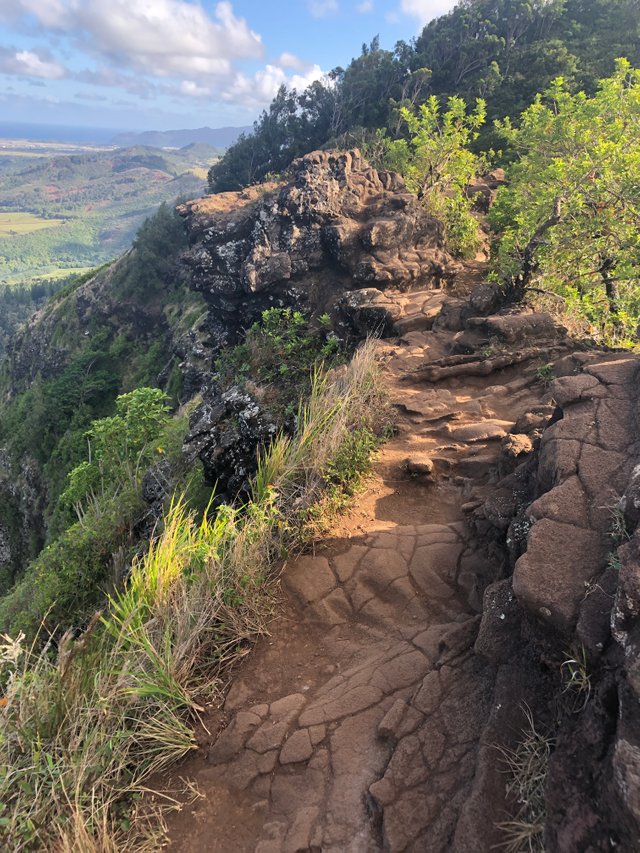
hey ya'll-
I know I've been silent lately. I'm going to start picking up posts here again, as I have been doing some major adventuring, permaculture exploring, botanizing and more.
I'm currently in Hawai'i for a few weeks doing interviews for the Ground Shots Podcast, and doing ethnobotanical research.
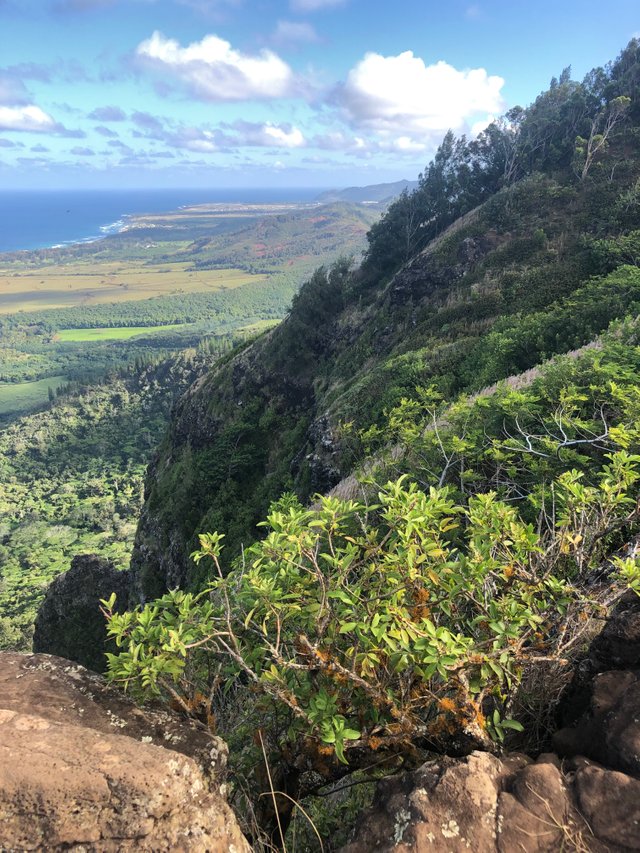
Here's a post I made behind a paywall on my patreon page for folks supporting the project. I thought I'd share this little tidbit with ya'll here on Steem too.
I've been both resting and busy here in Hawai'i. I've been doing lots of work on the podcast, but also trying to get out in the field a lot and take in the plants, the environment. I've been slowly photographing the plants, but I've been starting to get annoyed by how heavy my camera gear and plant books are. I need to get a lighter camera set up! The iphone isn't the best (that's what is featured in this journal today because I haven't gotten to editing the photos yet in lightroom) to get the quality I want on the whole, but I do utilize it at times because of the ease it allows. I've tried using iphone lenses on the camera to get a variety of macro and fisheye shots, but I don't love the hassle.
There are so many wild beaches to explore, so many trails to walk on. I've also been volunteering at the local food forest, and I am slated to interview three people who started the project over seven years ago on the work they are doing. Here's a link to the project. We chat on the air Friday. I'm bumping this interview up on the podcast to be published in the next few weeks because of the urgency behind some of the things the food forest faces this year.
Yesterday, I hiked up the popular Sleeping Giant Trail and did some botanizing, and plant photography. It is getting hot here! And it's super humid, which I've actually been loving, believe it or not, after years of living outside in the south. I never thought I'd say that. I'm soaking it up now since I'll be spending another summer in the west, where it doesn't rain, is super dry and dusty most of the time, unless you hug right on the coast.
The Sleeping Giant Trail is accessible to lots of people who live around the mountain and there are several trail routes going up. I took the medium length one (west trail), taking my time headed up. It's pretty accessible until you get to the last part at the very top, where you basically have to rock climb to get up some sleep areas. I was cursing the heavy backpack I was carrying- mostly cause I was worried it would throw off my balance. I was downing apple bananas, papayas, fish and pecans. My idea of trail food has changed here since there is so much fruit everywhere!
The trail was a mix of darker forest and open exposed terrain. I was discovering too that it contains a mix, like most of the island-- of native and endemic plants, as well as introduced plants in the form of tree plantings, and ornamentals/agricultural plants gone awry. Hawai'i has some of the most endemic plants concentrated in one place. It makes sense, given how remote it actually it. But, because of European and American colonization, and haphazard importing of plants and pests from all over the world, many endemic plants are being replaced by invasives. So many things here have been introduced by humans, it is throwing my perspective on 'native' plants for a loop because many are considered native even though they were brought here by Polynesian settlers (called 'canoe' plants) over a several thousand year period. And, many plants brought here in the 1800's till now have been woven into Hawai'ian culture, many have not. I still have a lot of research to do to speak to this- and perhaps interviewing some folks here who know a lot more than me on the matter would be more fitting.
I encountered 'Cook Pine' which is not actually a Pine, but a tree in an ancient coniferous plant family that I don't recognize. But I do recognize the tree, as my dad cultivated it as a 'mini' Christmas tree at his nursery in Virginia. I'll be doing a public blog post featuring photos of the tree from my DSLR camera, with more information. It's scientific name is Araucaria columnaris and it is in the
Araucariaceae plant family.
There is a lot of fascinating information out there about this tree, but one of the main things to note is that it is in an ancient coniferous plant family, and hails from New Caledonia, but is planted all over the world, hence its presence in the Hawai'ian islands. The ones I encountered on the trail seemed planted, but formed a dense large and dark forest. It suddenly made me feel like I was in a Douglas Fir forest of the west, or an old growth Hemlock forest of New England.
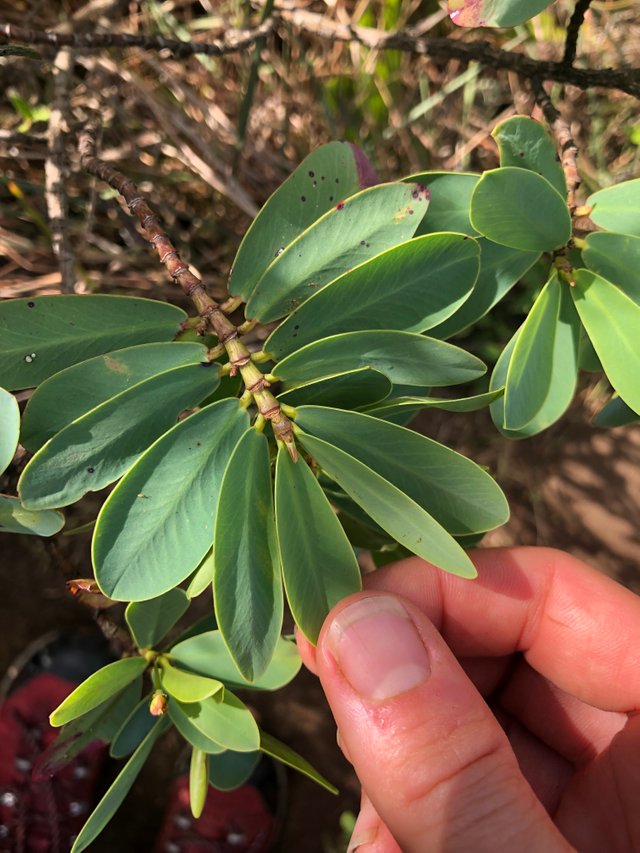
The trail seems to vary so much in temperature- on one ledge a cool breeze would be flowing over the top and hitting my sweating face. In other instances, the ridge seems stagnant and hot, drier. Above is a plant I found towards the top end of the trail, not to say that it wasn't below but I didn't notice it until up higher. It's called 'akoko, and its scientific name is Chamaesyce spp. - spp. to designate that there are many species on the island and it could be any and sometimes it is hard to distinguish. Some of the species here are introduced, and some are endemic. I'm not sure which this is. It's in the Euphorbiaceae plant family. Traditionally, it was probably used in formula with other plants as an emetic. Being in this plant family, it makes sense. Although I am discovering that there are more food and medicine plants in this family than I thought.
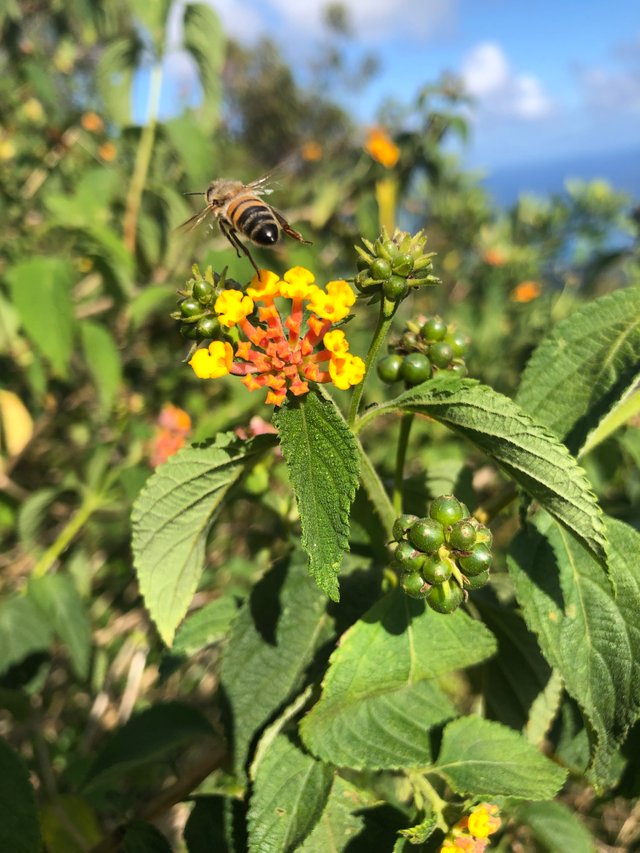
Lantana camara (Verbenaceae)
Ol' Lantana. Another I recognize from my dad and grandma's nursery. There wasn't fear of it becoming invasive in the south, given it acts as an annual. Not that nurseries are really too aware of how their ornamental cultivation experiments could become invasive and affect native ecologies. My dad would put them in hanging baskets for spring sales. Here, and in other parts of the tropics, Lantana is taking over. All of the books I have, and the people I talked to about it generally detest it. You have to admit though, it is beautiful, and this bee seems to like it.
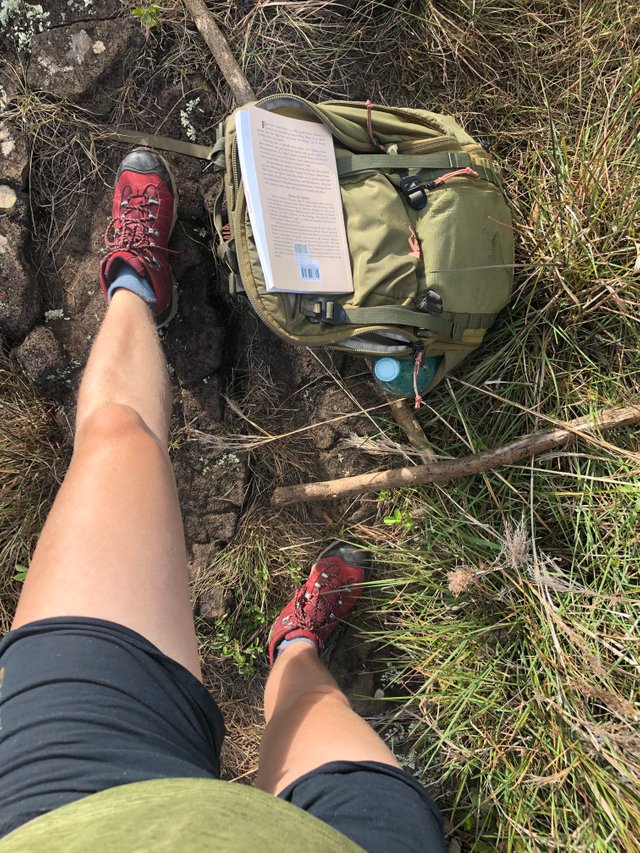
To listen to the audio version of this article click on the play image.

Brought to you by @tts. If you find it useful please consider upvoting this reply.
Hey! Welcome back! Glad to hear some more details of your journey in Hawaii. I’ve been following it a bit on insta too. Looks beautiful and sounds so amazingly abundant 💚🌿 will look forward to that podcast too.
It's kind of a permaculture paradise... or maybe I just met the right people... I'm being blown away by the diversity of plants, and the ways that people work with the land here. And, the huge presence of Hawaiian culture and Hawaiian relationship to plants and the land is like no place I've ever been. Of course, its complicated, and there's lots of tourism, and the reality of stolen land/colonization is very present too..
Nice to see you back posting @ofsedgeandsalt - I always learn so much from you. The lantana's made me nostalgic - my mother always had loads of them in a riot of colours in our childhood home in Australia. Wishing you happy trails and looking forward to more amazing content from you.
Leading the curation trail for both @ecotrain & @eco-alex.
Together We’re Making This World A Better Place.
Click Here To Join the manually curated trail "@artemislives" to support quality eco-green content.
@ecoTrain
It's neat to be in a place with so many plants new to me, many came here from Polynesia, or Australia, New Zealand, or even other tropical parts of the world. Of course, there are all of the native and endemic plants too.